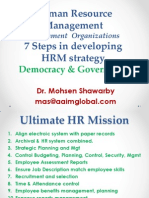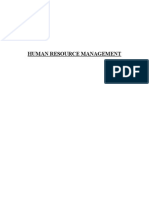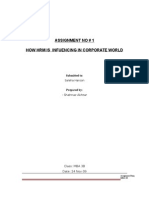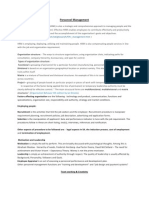0 ratings0% found this document useful (0 votes)
12 views21VMB3S402 Strategic Human Resources Management
21VMB3S402 Strategic Human Resources Management
Uploaded by
theknowledgezzindiaCopyright:
© All Rights Reserved
Available Formats
Download as PDF, TXT or read online from Scribd
21VMB3S402 Strategic Human Resources Management
21VMB3S402 Strategic Human Resources Management
Uploaded by
theknowledgezzindia0 ratings0% found this document useful (0 votes)
12 views3 pagesCopyright
© © All Rights Reserved
Available Formats
PDF, TXT or read online from Scribd
Share this document
Did you find this document useful?
Is this content inappropriate?
Copyright:
© All Rights Reserved
Available Formats
Download as PDF, TXT or read online from Scribd
Download as pdf or txt
0 ratings0% found this document useful (0 votes)
12 views3 pages21VMB3S402 Strategic Human Resources Management
21VMB3S402 Strategic Human Resources Management
Uploaded by
theknowledgezzindiaCopyright:
© All Rights Reserved
Available Formats
Download as PDF, TXT or read online from Scribd
Download as pdf or txt
You are on page 1of 3
Course: Strategic Human Resources Management Course Code: 21VMB3S402
Course Credits: 4 Learning Hours: 120
Course Outcomes
CO1: Identify the challenges and opportunities in SHRM and understand the context of
SHRM.
CO2: Describe the implications of the evolving strategic role of HR professionals and the
application of these strategies in the industry.
CO3: To develop a perspective on Strategic Human Resources Management.
CO4: Comprehend the policies of design and redesign of work systems.
CO5: To capture the changing landscape of SHRM by linking with business strategies.
Unit 1: Introduction to Strategic Human Resources Management
Introduction, history, the evolution of SHRM, Definition, an investment perspective of
Human Resources Management, understanding and measuring human capital, factors
influencing SHRM.
Learning Outcome: To appreciate the levels of understanding of SHRM.
Unit 2: Challenges in Strategic Human Resources Management
Impact of Technology, HR issues, and challenges related to technology, workforce
demographic changes, and diversity
Learning Outcome: To understand the Challenges in SHRM from different generational
cohorts.
Unit 3: Strategic Management
Models of strategy, the process of strategic management; mission statement, analysis of
the environment, establishing goals and objectives, setting strategy, corporate strategy,
business unit strategy.
Learning Outcome: To understand the Strategy models and their applications in an
organization.
Unit 4: The Evolving/ Strategies Role of Human Resources Management
Strategic HR versus Traditional HR, HR roles, Barriers to Strategic HR. Strategic
organization of HR functions. Outcomes of strategic HR, A model of strategic Human
Resources Management
Learning Outcome: To understand and evaluate the strategic role of human resources
management in an organization.
Unit 5: Strategic Human Resources Planning
What is Strategic Human resources planning, the importance of strategic human
resources planning, and the process of strategic human resources planning; Assessing
Current HR Capacity, Forecasting HR Requirements, Gap Analysis, Developing HR
Strategies to Support Organizational Strategies
Learning Outcome: To apply the strategic role of human resources planning in an
organization.
Unit 6: Design of Work Systems
The model for the design of work systems, Job specification, Job enlargement, job
rotation, job enrichment, and vertical loading. Five core job characteristics; skill variety,
task identity, task significance, autonomy, and feedback. Job Characteristics Model
Learning Outcome: To design the work systems in an organization to achieve
organizational goals.
Unit 7: Redesign of Work Systems
Strategic choices, Cross-cultural teams, challenges in cross-cultural teams, Redesign of
work systems, outsourcing, offshoring, mergers, and acquisition
Learning Outcome: To apply the process of redesigning the work systems in an
organization.
Unit 8: Implementation of Strategic Human Resources Planning
Process of implementing SHRM, Strategic recruitment, internal and external recruitment,
Methods of recruitment, E- Recruitments, challenges in Strategic human resources
management
Learning Outcome: To identify factors influencing SHRP and Strategic Recruitment.
Unit 9: Training and Development
Benefits of training and development, planning and strategizing training, Kirkpatrick,
Donald four steps to measuring training effectiveness; reaction, learning, behavior, results.
Integrating training with performance management systems and compensation
Learning Outcome: To provide an overview of training and development and how the
integration of training is done with performance management systems and compensation.
Unit 10: Strategic Performance Management and Feedback
Overview of Strategic Performance Management, competency-based performance, and
development, why performance management systems often fail, and performance
appraisal methods for different types of teams
Learning Outcome: To apply competency-based performance systems in an Organization.
Unit 11: Compensation
Compensation system, direct; base pay, incentive pay, indirect; legally required and
optional. Equity, Equity, and work-related outcomes, internal and external equity.
Learning Outcome: To apply the compensation system considering employee voice.
Unit 12: Labor Relations
Why employee unionizes, collective bargaining; process, failure to reach an agreement,
labor relations in the pandemic
Learning Outcome: To evaluate the various labor relations strategies and its
implementations for the betterment.
Unit 13: Employee Separation
What is employee separation, overview on reductions in force, layoffs, and turnover,
managing great resignations, to great retention, strategic downsizing, and retirement?
Learning Outcome: To familiarize the learner with the concept of employee separation and
factors influencing employee separation.
Unit 14: Global Human Resources Management
How global HRM differs from Domestic HRM, Assessing culture, strategic HR issues in
global assignments, expatriate, repatriation
Learning Outcome: To know the global HRM and HR issues in global assignments.
Unit 15: Strategic Initiatives and contemporary challenges in interventions of HR
HR Issues in Mergers & Acquisitions with different sector-specific. HR challenges in
difficult Times. HR Outsourcing and HRM. Social Accountability, Sustainability & HRM.
Cross-cultural management. Contemporary challenges in interventions of HR talent
management
Learning Outcome: To know the virtual working scenarios during Covid-19 and challenges
faced by employees and organizations at different levels of change tactics and strategies
adopted in managing change.
You might also like
- Course: Organizational Behaviour & Human Resources Management Course Code: Course Credits: 4 Learning Hours: 120 Course OutcomesDocument5 pagesCourse: Organizational Behaviour & Human Resources Management Course Code: Course Credits: 4 Learning Hours: 120 Course OutcomesSuresh SubramaniNo ratings yet
- All HR Syllabus For Students - SymbiDocument10 pagesAll HR Syllabus For Students - SymbiseesawupndownNo ratings yet
- HRM325 SuderlandDocument536 pagesHRM325 SuderlandYanah Flojo100% (1)
- Introduction To HRMDocument3 pagesIntroduction To HRMzubanaNo ratings yet
- HRD SyllabusDocument3 pagesHRD SyllabusMazumder Suman100% (2)
- 7 Steps in Developing HRM StrategyDocument11 pages7 Steps in Developing HRM StrategyKim Anh Nguyen100% (1)
- Human Resources Management: Course Syllabus HRM 501Document2 pagesHuman Resources Management: Course Syllabus HRM 501AmitNo ratings yet
- MMBA-606 Human Resource ManagementDocument155 pagesMMBA-606 Human Resource ManagementDeluar HossainNo ratings yet
- HRM Nt8y54Document59 pagesHRM Nt8y54Priyesh SolkarNo ratings yet
- Human Resource ManagementDocument163 pagesHuman Resource ManagementRitesh MishraNo ratings yet
- Human Resource Management 7 Steps in Developing HRM StrategyDocument11 pagesHuman Resource Management 7 Steps in Developing HRM StrategyjaysoreNo ratings yet
- 22PGD203 HRMDocument5 pages22PGD203 HRMRohit KumarNo ratings yet
- Sample Module-HRM (Credits To Owner)Document8 pagesSample Module-HRM (Credits To Owner)RafNo ratings yet
- BBA322 Strategic MGNT of HRDocument536 pagesBBA322 Strategic MGNT of HRBrian Kafeno0% (1)
- Hrpa Mba 4 137898134Document20 pagesHrpa Mba 4 137898134p00rnimasinghNo ratings yet
- Human Resource Management: IndexDocument72 pagesHuman Resource Management: IndexSahil KapoorNo ratings yet
- Strategic HR PlanningDocument7 pagesStrategic HR Planningzona5zamanNo ratings yet
- HR NotesDocument4 pagesHR Notesmedha.appallNo ratings yet
- Strategic Human Resource Management MC-311Document122 pagesStrategic Human Resource Management MC-311senthur KaniNo ratings yet
- SHRM Ques & Ans - 2023Document8 pagesSHRM Ques & Ans - 2023workhome starNo ratings yet
- HRMDocument18 pagesHRMShrikant GajareNo ratings yet
- MGT-404Document10 pagesMGT-404Amna KhalidNo ratings yet
- It's Time To Split HR: Prof. Ram CharanDocument20 pagesIt's Time To Split HR: Prof. Ram CharanRishi WadhwaniNo ratings yet
- Strategic Role of HRM 661681893850616Document15 pagesStrategic Role of HRM 661681893850616Mantry PriyatheeNo ratings yet
- CPHR AP HumanResourcesManagementDocument9 pagesCPHR AP HumanResourcesManagementShafa AlasgarovaNo ratings yet
- HRM Lecture NotesDocument29 pagesHRM Lecture NotesJolyn LeeNo ratings yet
- 10.2 Human Resource Planning and Audit Block 2Document199 pages10.2 Human Resource Planning and Audit Block 2prathapNo ratings yet
- Week 34 Strategic Human Resource ManagementDocument6 pagesWeek 34 Strategic Human Resource ManagementAila Marie GarciaNo ratings yet
- Human Resource ManagementDocument3 pagesHuman Resource ManagementGinner Havel Sanaani CañedaNo ratings yet
- BA - Strategic Human Resource MGMTDocument3 pagesBA - Strategic Human Resource MGMTsamknight2009No ratings yet
- Human Resource ManagementDocument4 pagesHuman Resource Managementisaacmagoya9No ratings yet
- FAQ's in Marketing ElectivesDocument25 pagesFAQ's in Marketing ElectivesM Srinivasa RaoNo ratings yet
- Human Resource and ConclusionDocument5 pagesHuman Resource and ConclusionCarolina GutierrezNo ratings yet
- HRM - Course OutlineDocument4 pagesHRM - Course OutlineWajahat RaffatNo ratings yet
- The Following Features of Organisational Behaviour Emerge: 1. Behavioural Approach To ManagementDocument9 pagesThe Following Features of Organisational Behaviour Emerge: 1. Behavioural Approach To ManagementMegha DurganNo ratings yet
- Scope of Human Resource ManagementDocument21 pagesScope of Human Resource Managementchin22No ratings yet
- HRM 17ba2t2Document2 pagesHRM 17ba2t2SOUMYAJIT BARINo ratings yet
- Human Resources Management NotesDocument22 pagesHuman Resources Management Notessameerahmadkhan130No ratings yet
- Human Resource MangementDocument101 pagesHuman Resource MangementNargees AfzaliNo ratings yet
- Preface TYPEDocument77 pagesPreface TYPEmanishsaxena88No ratings yet
- Group HRMDocument16 pagesGroup HRMgemechisfikiru99No ratings yet
- HONs/ ProgramDocument3 pagesHONs/ ProgramAnushka BhanjaNo ratings yet
- PGP 2017-2019 Human Resource Management (Elective - Term 5) Course Outline Credits: 3 Introduction To The CourseDocument5 pagesPGP 2017-2019 Human Resource Management (Elective - Term 5) Course Outline Credits: 3 Introduction To The CourseAkshayNo ratings yet
- Module - 01Document26 pagesModule - 01prachiNo ratings yet
- HRM Mid Sem AnswerDocument10 pagesHRM Mid Sem AnswerApril ReynoldsNo ratings yet
- Fundamental Areas of MNGTDocument33 pagesFundamental Areas of MNGTAngelica SamaniegoNo ratings yet
- HRM NotesDocument82 pagesHRM NotesUday GowdaNo ratings yet
- of Strategic HRMDocument21 pagesof Strategic HRMGayatri ChopraNo ratings yet
- MGT 223: Organizational Behavior & Human Resource ManagementDocument3 pagesMGT 223: Organizational Behavior & Human Resource ManagementSomeet AgrahariNo ratings yet
- HRM - IMP NotesDocument32 pagesHRM - IMP Notesmerchantraza14No ratings yet
- ICFAI MBA Admission DetailsDocument8 pagesICFAI MBA Admission DetailsSachin ChauhanNo ratings yet
- Assignment No # 1 How HRM Is Infuencing in Corporate World: Submitted ToDocument15 pagesAssignment No # 1 How HRM Is Infuencing in Corporate World: Submitted ToShahnaz AkhtarNo ratings yet
- Personnel Management: Organization Behavior 4th Edition by Ian BrooksDocument2 pagesPersonnel Management: Organization Behavior 4th Edition by Ian BrooksAbiodun IloriNo ratings yet
- Mba II Human Resource Management (14mba21) NotesDocument82 pagesMba II Human Resource Management (14mba21) NotesMILIND67% (3)
- MIT School of Business PGMP - Syllabus Semester - I Subject Name: Human Dynamics Subject Code: 102 (Human Resource Management) Course ObjectiveDocument3 pagesMIT School of Business PGMP - Syllabus Semester - I Subject Name: Human Dynamics Subject Code: 102 (Human Resource Management) Course ObjectiveAdv Apurja Suhhas DandeNo ratings yet
- Human Resource ManagementDocument2 pagesHuman Resource ManagementAntoine CoulaudNo ratings yet
- Human Resource Management (HRM)Document3 pagesHuman Resource Management (HRM)kinnethmercado01No ratings yet
- The Encyclopedia of Human Resource Management, Volume 3: Thematic EssaysFrom EverandThe Encyclopedia of Human Resource Management, Volume 3: Thematic EssaysNo ratings yet
- Human Resources Management: All the Information You Need to Manage Your Staff and Meet Your Business ObjectivesFrom EverandHuman Resources Management: All the Information You Need to Manage Your Staff and Meet Your Business ObjectivesRating: 4.5 out of 5 stars4.5/5 (15)
- Effective Succession Planning: Ensuring Leadership Continuity and Building Talent from WithinFrom EverandEffective Succession Planning: Ensuring Leadership Continuity and Building Talent from WithinRating: 3.5 out of 5 stars3.5/5 (4)
- Edi Staff Builders International Vs NLRC EscraDocument40 pagesEdi Staff Builders International Vs NLRC EscraLalaine FelixNo ratings yet
- 5IVP Assessment Activities Version B.3 June 2019-JamalDocument22 pages5IVP Assessment Activities Version B.3 June 2019-JamalShahroz100% (3)
- Domestic Enquiry: in The Context of Bangladesh Labour Code-2006Document41 pagesDomestic Enquiry: in The Context of Bangladesh Labour Code-2006alimshNo ratings yet
- Who Cannot Unionize and How To Register A UnionDocument51 pagesWho Cannot Unionize and How To Register A UnionSteps RolsNo ratings yet
- Utopia Consti Reviewer PART 2 Version 4Document105 pagesUtopia Consti Reviewer PART 2 Version 4Aris Manguera100% (2)
- Assistant Facilities ManagerDocument2 pagesAssistant Facilities ManagerLindaniNo ratings yet
- Lang 111 Printed NoteDocument29 pagesLang 111 Printed NoteGadhavi jinalNo ratings yet
- Summer Training Report On Nakoda LTDDocument82 pagesSummer Training Report On Nakoda LTDSanup SimonNo ratings yet
- Iggy's Bread of The World - Case - AnaylsisDocument13 pagesIggy's Bread of The World - Case - AnaylsisDhruvParmarNo ratings yet
- Government Policies For Technological Innovation and Skill Development FinalDocument5 pagesGovernment Policies For Technological Innovation and Skill Development FinalAmit SinghNo ratings yet
- Contract Works Procurement Plan TemplateDocument5 pagesContract Works Procurement Plan TemplateFrancisco SalazarNo ratings yet
- IELTS Invitation Letter Model Answer: Words 183Document6 pagesIELTS Invitation Letter Model Answer: Words 183Dinesh RawalNo ratings yet
- LBC Express-Vis, Inc. v. Palco, G.R. No. 217101, February 12, 2020Document4 pagesLBC Express-Vis, Inc. v. Palco, G.R. No. 217101, February 12, 2020May Ann BorlonganNo ratings yet
- Career Development and ManagementDocument20 pagesCareer Development and ManagementDK BalochNo ratings yet
- Final Print 23113 QUALITY CONTROL IN OCCUPATION SAFTY, HEALTH AND ENVRIOMENTDocument125 pagesFinal Print 23113 QUALITY CONTROL IN OCCUPATION SAFTY, HEALTH AND ENVRIOMENTARIF100% (1)
- Sample Dissertation - ITDocument79 pagesSample Dissertation - ITSha Dab AhMad HarniNo ratings yet
- Gujarat Technological University: Page 1 of 3Document3 pagesGujarat Technological University: Page 1 of 3jpbhimaniNo ratings yet
- RuralDevelopmentApproachesandStrategies Paper15Document22 pagesRuralDevelopmentApproachesandStrategies Paper15Aisha RahatNo ratings yet
- LWV CONSTRUCTION CORPORATION v. MARCELO B. DUPO, GR No. 172342, 2009-07-13Document2 pagesLWV CONSTRUCTION CORPORATION v. MARCELO B. DUPO, GR No. 172342, 2009-07-13Marj LoNo ratings yet
- Minimum Wages in Delhi: Revised Rates ofDocument3 pagesMinimum Wages in Delhi: Revised Rates ofkasim_khan07No ratings yet
- 2.2 Evaluating Economic PerformanceDocument12 pages2.2 Evaluating Economic PerformanceMissDangNo ratings yet
- Labrel Dgest Topic 9Document23 pagesLabrel Dgest Topic 9Roger John Caballero Fariñas IINo ratings yet
- Employee Retention Strategies in BPO Industry: A Study With Reference To Selected BPO Sector Organizations at HyderabadDocument5 pagesEmployee Retention Strategies in BPO Industry: A Study With Reference To Selected BPO Sector Organizations at HyderabadKristine BaldovizoNo ratings yet
- Srinidhi M P: Understanding Business Cia - 1 POSLC of 4 Key Economies and ExamplesDocument7 pagesSrinidhi M P: Understanding Business Cia - 1 POSLC of 4 Key Economies and ExamplesswathiNo ratings yet
- Employees' Old-Age Benefits InstitutionDocument20 pagesEmployees' Old-Age Benefits InstitutionSAWERA TEXTILES PVT LTDNo ratings yet
- The Manager's Role Inside The Organization: Are Hierarchies of TitlesDocument2 pagesThe Manager's Role Inside The Organization: Are Hierarchies of TitlesArafatNo ratings yet
- Cabagnot Vs CSCDocument10 pagesCabagnot Vs CSCKcompacionNo ratings yet
- Research ProposalDocument15 pagesResearch ProposalMairaj RasheedNo ratings yet
- Tupas Vs OpleDocument10 pagesTupas Vs Oplemcris10150% (2)
- MINDTREE - Case Study WriteupDocument10 pagesMINDTREE - Case Study WriteupAnindya BiswasNo ratings yet

























































































